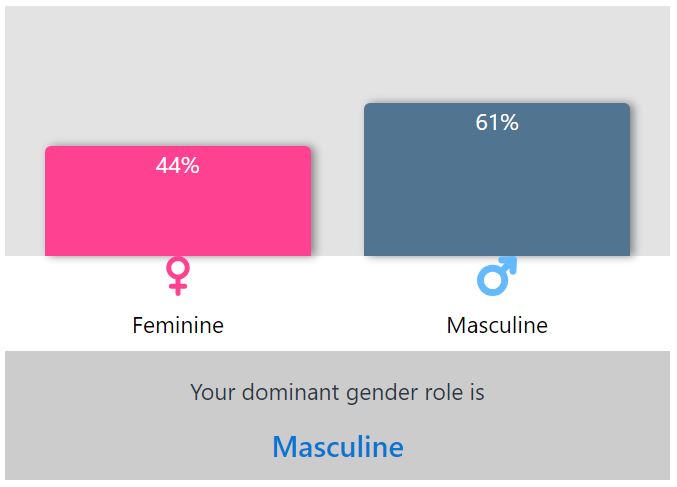
Traditional Gender Norms
Behaviors and expectations based on gender have become entrenched in societies globally. Established norms for gender roles are linked to particular activities and actions people take. These appropriate expectations dictate how men and women should engage with others and the specific responsibilities they should undertake.
In older cultures, roles based on gender existed due to differences between males and females biologically. Being the provider and supporting their families financially was often expected of men. They usually held jobs requiring physical labor and were regarded as the leaders of the household. As for the fairer sex, their duties included being a caretaker and maintaining the household. Duties included raising young ones, taking care of household chores, and fostering emotional bonds within their families.
These traditional gender norms were reinforced through cultural and societal expectations, religious beliefs, and educational systems. They created a division of labor where men and women had distinct roles and responsibilities, limiting their opportunities and potential for personal and professional growth.

Gender Roles in Society
Challenging traditional norms, gender roles have evolved alongside the transformation of society. The shift towards modern perspectives has greatly influenced the roles that were once a mainstay for centuries.
No longer does biology define the roles society assigns based on gender. The many talents, skills, and aspirations that both men and women possess make them unique as individuals. The barriers and expectations that previously limited individuals based on gender are slowly being dismantled.
Certain jobs and industries still cling to traditional gender roles despite societal changes. Stereotypes and historical prejudices have led to a gender divide within career fields. Engineering, finance, and computer science tend to be male-dominated, while women often gravitate toward teaching, nursing, or social work.
These gendered career choices are largely influenced by societal expectations, gender stereotypes, and the persistence of traditional gender norms. Despite progress in achieving gender equality in many areas, disparities in occupational choices and opportunities still persist.
Gender Equality Movement
Activists challenging traditional gender roles through the gender equality movement have played a pivotal role. They fought for equal opportunities, treatment, and rights for individuals across all genders.
Promoting gender equality in areas like education, employment, and healthcare has been an ongoing focus for the movement. Supportive organizations and initiatives have similarly emerged, aimed at empowering women, addressing gender stereotypes, and promoting inclusivity.
The measurement and assessment of gender roles in individuals' adherence to modern or traditional outlooks have been enabled through psychological scales like the Personal Attributes Questionnaire and the Bem Sex Role Inventory.
Researchers use scales to assess how much people display stereotypical masculine or feminine attributes, which can offer understanding on how gender roles influence a person's actions and self-image.
Role of Women Today
One of the most significant changes in gender roles over time has been the increased participation of women in various spheres of life. Today, women are breaking barriers and excelling in fields that were once considered exclusive to men.
Women have made substantial progress in education, politics, business, and other professional arenas. They are now occupying leadership positions and contributing to societal and economic development on a global scale.
However, despite these achievements, women still face challenges and barriers in their pursuit of gender equality. Gender pay gaps, underrepresentation in leadership roles, and gender-based violence are just a few examples of the persistent inequalities that women experience.
It is crucial to continue challenging traditional gender norms and promoting gender equality to ensure that women can fully realize their potential and contribute to a more inclusive and equitable society.
Role Reversal in Relationships
As gender roles evolve, there has been a noticeable shift in the dynamics of relationships. Traditional gender norms often established a hierarchical structure within relationships, where men held more power and decision-making authority.
In modern relationships, however, there has been a move towards more egalitarian partnerships, characterized by shared responsibilities, decision-making, and mutual support. Couples are increasingly challenging traditional gender roles and embracing a more collaborative approach to their relationships.
Role reversal in relationships can take various forms. It may involve men taking on more household chores and caregiving responsibilities, while women pursue careers and take on leadership roles. It can also mean a more equitable distribution of emotional labor and decision-making, where both partners have an equal voice and influence.
These role reversals in relationships not only promote gender equality but also contribute to healthier and more fulfilling partnerships, where mutual respect, understanding, and support are paramount.
Careers and Jobs in Modern and Traditional Perspectives
Career choices and job opportunities have also undergone significant changes as gender roles have evolved. In traditional perspectives, certain careers were considered suitable for men, while others were deemed appropriate for women.
Today, however, individuals have greater freedom to choose careers based on their interests, skills, and aspirations, regardless of their gender. Gender-based barriers and biases still persist, but progress has been made in breaking down these barriers and creating a more inclusive and diverse workforce.
Efforts to promote gender equality in the workplace have led to advancements such as maternity and paternity leave policies, gender diversity initiatives, and the promotion of work-life balance.
Furthermore, traditional gender norms often created a division between "masculine" and "feminine" jobs, reinforcing stereotypes and limiting opportunities for individuals. By challenging these norms, society can create a more inclusive and diverse workforce, where individuals are valued for their skills, talents, and contributions rather than their gender.
In conclusion, the evolution of gender roles has brought about significant changes in society. Traditional gender norms have been challenged, and a shift towards more inclusive and egalitarian perspectives has emerged. However, there is still work to be done to achieve true gender equality in all facets of life. By promoting awareness, challenging stereotypes, and advocating for equal rights and opportunities, we can create a more equitable and inclusive society for everyone.
























